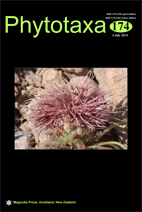Abstract
Hemiboea malipoensis, a new species of Gesneriaceae from southeastern Yunnan, China, is here described and illustrated. Based on morphological and molecular evidence, it was found to be similar to H. magnibracteata and H. cavaleriei var. paucinervis by conspicuous involucre and anthers fused by entire adaxial surfaces, but can be easily distinguished from the latter two species by its manificat spherical involucre, 3.5–4.5 cm in diameter, cymes with 4–10 flowers, corolla larger, 4.5–5.5 cm long, pale yellow-yellow, corolla tube glabrous, Calyx lanceolate, 5-parted from the base.

